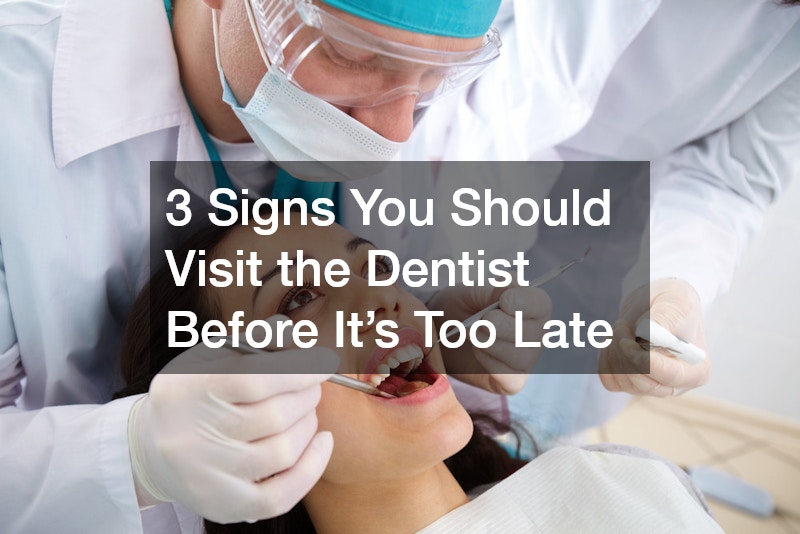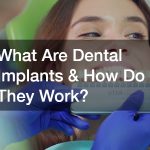Dental issues are often silent threats. In their early stages, they rarely cause severe pain or visible damage. But ignoring these signs can lead to long-term oral health problems, more invasive treatments and avoidable expenses. Visiting a dental clinic regularly ensures problems are caught early—before they evolve into emergencies.
However, many Australians still delay appointments until the discomfort becomes unbearable. Here are three unmistakable signs you should visit the dentist before it’s too late.
1. Persistent Tooth Sensitivity or Pain
Tooth sensitivity is a common issue that can be caused by worn enamel, exposed tooth roots, cavities or even gum disease. Some sensitivity is normal, especially when consuming very hot or cold foods.
But if this discomfort becomes persistent or worsens over time, it’s likely a sign of an underlying issue.
Tooth pain, especially when biting down or chewing, should never be dismissed. Pain is the body’s warning signal. What might begin as a dull ache can quickly develop into an infection requiring root canal treatment or extraction if not addressed early.
In many cases, minor cavities can be resolved with a simple filling. But when left untreated, they can extend deeper into the tooth and impact the nerve, resulting in more serious procedures and higher costs. Catching the issue early by seeing your dentist not only protects your teeth but also helps avoid the discomfort of advanced dental decay.
Even if the pain seems to disappear after a few days, don’t assume the problem has resolved itself. Infections can occasionally stop hurting as the nerve dies—but this only signals that the issue has worsened. Early professional evaluation is essential.
2. Bleeding Gums or Visible Gum Changes
Bleeding gums are often dismissed as a result of brushing too hard. However, healthy gums should not bleed during regular brushing or flossing. This is usually one of the earliest signs of gingivitis, the first stage of gum disease. Left untreated, gingivitis can progress to periodontitis—a serious infection that damages the soft tissue and bone supporting your teeth.
If your gums are red, swollen, receding or bleed regularly, it’s time to act. Gum disease is one of the leading causes of adult tooth loss, yet it’s entirely preventable with timely treatment. Visiting a dentist when these symptoms first appear can help reverse the condition before lasting damage occurs.
Other signs to watch for include persistent bad breath, pus between the teeth and gums or a change in how your teeth fit together when you bite. These indicate more advanced stages of gum disease and require immediate attention.
Changes in gum appearance should never be overlooked. Gums that pull away from the teeth, creating pockets, are a key indicator that infection is taking hold beneath the surface. These pockets become breeding grounds for bacteria, which can spread through the bloodstream and contribute to broader health issues, including heart disease and diabetes complications.
3. A Loose or Chipped Tooth
Adult teeth should never feel loose. If you notice a tooth shifting slightly or feeling unstable, it may be due to bone loss, trauma or underlying gum disease. Acting quickly can often save the tooth and restore stability. Waiting too long may result in irreversible damage or the need for extraction.
Chipped or cracked teeth may not always cause pain, especially if the damage is small. However, these fractures create openings for bacteria, which can lead to infection, decay or nerve damage if not repaired. Even minor cracks should be evaluated by a dental professional to assess the risk of further complications.
It’s not only trauma that causes these problems. Everyday habits like grinding your teeth (bruxism), chewing on hard foods or even using your teeth as tools can contribute to breakage. Regular check-ups allow your provider to spot early signs of wear and take preventative action.
For athletes or individuals prone to grinding, custom-fitted mouthguards can prevent future injury. But these protective measures only help when a professional has diagnosed the risk and tailored a solution for your needs.
Don’t Wait for a Dental Emergency
Too many people wait until the pain is unbearable or a tooth is beyond saving before booking an appointment. Emergency dental procedures are not only more stressful but also more expensive and invasive. By recognising early warning signs and acting promptly, you can avoid complex treatments and maintain better oral health.
Routine dental visits are designed to identify subtle changes in your mouth that you may not notice. Issues like enamel erosion, early decay or jaw misalignment are often invisible to the untrained eye but easily detected by a dental professional. In many cases, early intervention involves simple, non-invasive treatment.
.



